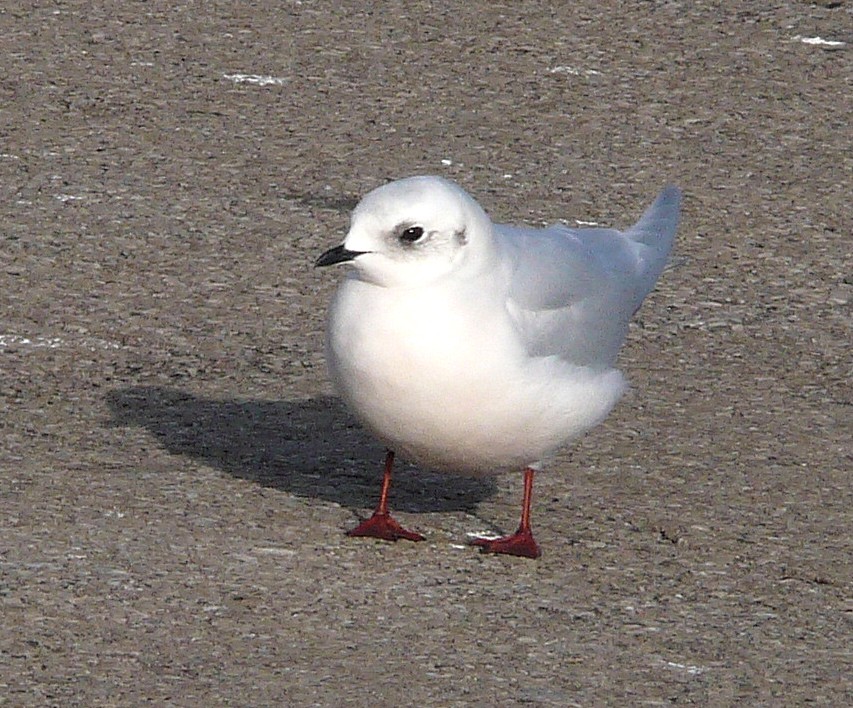Ross's Gull
A species of Ross'S Gull, Also known as Red Gull Scientific name : Rhodostethia rosea Genus : Ross'S Gull
Ross's Gull, A species of Ross'S Gull
Also known as:
Red Gull
Botanical name: Rhodostethia rosea
Genus: Ross'S Gull
Content
Description General Info
Description
This small bird is similar in size and some plumage characteristics to the little gull. It is slightly larger and longer winged than the little gull species, and has more-pointed wings and a wedge-shaped tail. Its legs are red. Summer adults are pale grey above and white below, with a pink flush to the breast, and a neat black neck ring. In winter, the breast tints and neck collar are lost and a small dark crescent develops behind the eye. Young birds resemble winter adults, but have a dark "W" pattern on the wings in flight, like young little gulls. The juveniles take two years to attain full adult plumage. Ross's gull measurements: Length: 11.4-12.2 in (29-31 cm) Weight: 4.9-8.8 oz (140-250 g) Wingspan: 35.4-39.4 in (90-100 cm) 
Size
32-36 cm (12.5-14 in)
Life Expectancy
21 years
Nest Placement
Ground
Feeding Habits
Ross's Gull primarily consume invertebrates, small fish, and marine vertebrates. They exhibit varied feeding behaviors, including surface skimming, mudflat racing, and spinning in water to capture prey. They sometimes follow ships to access prey beneath ice and eat biofilm from intertidal zones.
Habitat
Ross's Gull predominantly thrives in the boggy terrains of the upper taiga and tundra, favoring marshy tundra landscapes near ponds or within river deltas, where scattered dwarf shrubs, willows, and alders are present. Specifically adapted to cold climates, ross's Gull nests in small colonies at low altitudes and, outside the breeding season, forages near Arctic Ocean pack ice. They show a strong preference for open seas and ice edges, and during migration, they may appear in diverse aquatic environments in the U.S., often associating with other small gull species.
Nest Behavior
Both male and female ross's Gull collaborate in the construction of the nest. Timing of nest building and egg-laying patterns are aligned with the brief Arctic summer, ensuring parental care during the optimal season.
Nest Characteristics
Ross's Gull typically nests on small hummocks or tussocks in marshy tundra, creating a cup-shaped structure composed of grasses, sedges, and reindeer moss.
Dite type
Aquatic invertebrate eater
General Info
Feeding Habits
Bird food type
Behavior
Ross's Gull exhibits several distinct behaviors that underscore their adaptability to their arctic and subarctic habitats. Typically, ross's Gull engage in a swift courtship upon reaching their nesting grounds, expressing an urgent vocalization akin to shorebirds. Mutual nest-building, egg incubation, and chick rearing are shared responsibilities between mates, reflecting a strong partnership. Territorial defense by males escapes frequent conflict due to the sparse clustering of nests, which are meticulously concealed to evade detection—underscoring their cautious nature. A notable behavior mirroring shorebirds is the adults' strategic diversion of predators using feigned injury or distraction techniques. Remarkably, ross's Gull sometimes consolidate chicks from multiple nests, enhancing communal protection in their offspring's vulnerable stages. Their daily activities and interactions with their environment reveal a blend of typical avian care strategies and unique survival adaptations.
Distribution Area
Ross's gull breeds in the high Arctic of northernmost North America, and northeast Siberia. It migrates only short distances south in autumn, most of the population wintering in northern latitudes at the edge of the pack ice in the northern Bering Sea and in the Sea of Okhotsk, although some birds reach more temperate areas, such as north west Europe; in February 2016 they were sighted in Cornwall and Ireland according to the BTOs 'BirdTrack'. In North America, a Ross's gull has been spotted as far south as Salton Sea in California, although sightings this far south are extremely rare. The summer breeding grounds are tundra with sedges, grass tussocks, dwarf willows, bushes, lichens and pools. 
Species Status
Not globally threatened.
